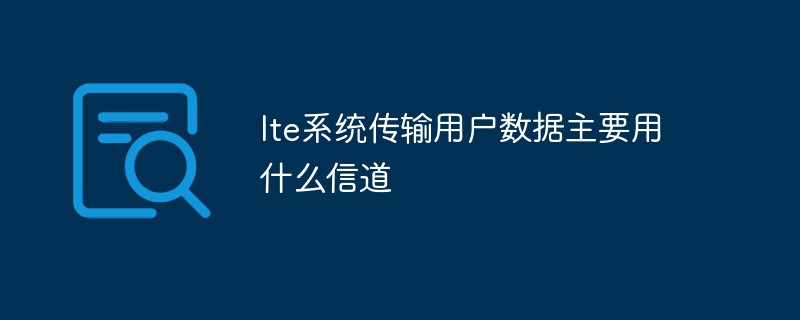
The lte system mainly uses shared channels to transmit user data. Lte is the abbreviation of long Term Evolution; lte is divided into two standards: LTE-TDD and LTE-FDD according to different duplex modes; the lte standard proposes system Strict technical requirements are mainly reflected in aspects such as capacity, coverage, and mobility support.

lte system mainly uses shared channels to transmit user data.
LTE is the abbreviation of long Term Evolution. When the 3GPP standardization organization initially formulated the LTE standard, it positioned it as an evolution and upgrade of 3G technology. Later, the development of LTE technology far exceeded expectations, and the subsequent evolved version of LTE, Release 10/11 (ie, LTE-A), was determined to be the 4G standard. LTE is divided into two standards: LTE-TDD and LTE-FDD according to different duplex modes. LTE-TDD is also called TD-LTE. In 2012, 3GPP TD-LTE and LTE-FDD standards were at the same pace.
LTE Technology
LTE (Long Term Evolution) was originally an evolution standard in the transition and upgrade process from the third generation to the fourth generation of mobile communications, including LTE FDD and LTE TDD (often referred to as TD-LTE) two modes. With the issuance of TD-LTE licenses in 2013, 4G networks, terminals, and services have entered the official commercial stage, which also marks that my country has officially entered the 4G era. Compared with previous digital mobile communication systems, 4G networks have higher data speeds, transmission quality and spectrum utilization, can accommodate more users, support multiple services and seamless connectivity between multiple mobile networks around the world. roaming. From a technical level, all this also stems from major changes in the air interface technology of the wireless access network and the network structure of the core network [3].
The LTE standard puts forward strict technical requirements for the system, mainly in terms of capacity, coverage, mobility support, etc., which are summarized as follows:
The peak rate of downlink within the 20 MHz bandwidth is 100Mbps, the uplink peak rate is 50Mbps;
Spectral efficiency - downlink is 3 to 4 times that of HSDPA, uplink is 2 to 3 times that of HSUPA;
Coverage enhancement--improves cell edge code rate, meeting the optimal capacity within the range of 5km, slightly decreasing within the range of 30km, and supporting a coverage radius of 100km;
Improved mobility - optimal performance within the range of 0~15km/h, 15~120km/h High performance within the range, supporting 120 to 350km/h, and even 500km/h in some frequency bands;
Latency optimization - the one-way transmission delay of user plane data is less than 5ms, and the control plane is idle to activated The state transfer delay is less than 100ms.
Diversified service content - with high-performance broadcast services, improved real-time business support capabilities, VoIP reaching the performance of UTRAN circuit domain;
Reduced operation and maintenance costs - flat and simplified network architecture , Reduce the operation and maintenance costs of the operator's network.
The above is the detailed content of What channels do LTE systems mainly use to transmit user data?. For more information, please follow other related articles on the PHP Chinese website!




